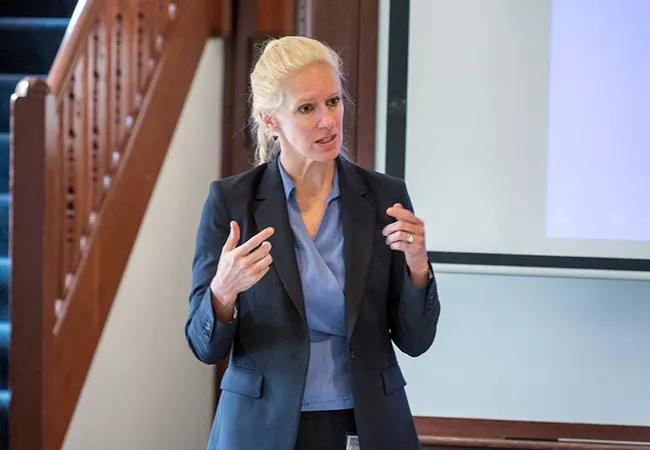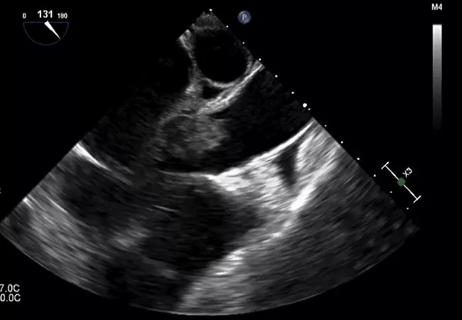Respond to behaviors, not individuals

Advertisement
Cleveland Clinic is a non-profit academic medical center. Advertising on our site helps support our mission. We do not endorse non-Cleveland Clinic products or services. Policy
Anyone who has tried to appreciate the challenges we face in medicine has probably read the 1978 article by Groves, “Taking care of the hateful patient.” This and a later article by Strous et al label and group patients according to specific behaviors and, perhaps more importantly, how they make the clinician on the other end of the conversation feel.
How patients make us feel should not be underappreciated. Taking care of other human beings is a complex, intricate, intimate privilege. To characterize it as anything else — to simply consumerize it — is to not fully understand it.
Yet, now more than ever, the impact of challenges — not just with patients but in healthcare today — is staggering: 54 percent of US physicians report burnout, and significant numbers would not choose medicine again as a career. Too much time spent charting (up to 2 hours in a recent study) and less time spent connecting as human beings are driving the meaning out of medicine. Calls are growing for more empathy in medicine and better services to meet the needs of patients and caregivers alike.
An article by Schuermeyer et al offers steps forward and also continued opportunities. The article begins to shift us from labeling patients as “dependent clingers” and “entitled demanders” to a much needed and more meaningful discussion about difficult patient behaviors and how we might more effectively respond to them.
Even if we need to apply them in medicine at times, our labeling the type of person a patient is or how the patient behaves carries tremendous significance to our patients and should not be applied lightly. Depending on the words or labels we choose, our words can stigmatize, validate, damage or heal. Have no doubt, however, that our words will be remembered.
Advertisement
As a chief experience officer, I review thousands of patient comments every month. And what patients say is that although their medical care may be spectacular, their emotional needs and expectations are not always met. Despite both valid and less-valid criticisms of patient satisfaction surveys, we have an obligation to listen and learn. We too are fallible.
We too could be — and most certainly are — labeled by patients. “Insensitive,” “uncaring” and “rude” are words I too often hear from patients as they comment on the care they received from their physicians. These labels certainly do not embody the profound caring at the core of the healthcare profession, just as they do not embody our patients.
An additional and unforeseen risk to labeling is the end of meaningful reflection. When we label, we stop asking who this person is. What trauma did the person suffer that makes trust so difficult? What is he or she most afraid of? What am I contributing to this ineffective dialogue, and how can I adapt my own language and behavior? We have a professional responsibility to respond to frustration or challenges with patients, not with labeling in return, but with humility, listening, and reflection.
To truly enhance communication and the experience of our patients, we must model empathic curiosity. People are not the label we give them. They are not the disease they have. The richness of their lives, experiences and emotions cannot possibly be embodied in a single word that we have assigned. Our role as healers requires not judgment but the willingness to know more about who they are and the skill to more effectively express our intention and meaning. Only then will our patients feel truly “seen” and known by us.
Advertisement
To that end, there are a few models of effective communication. One of them, the Relationship: Establishment, Development and Engagement (REDE) model, was developed at Cleveland Clinic, and a recent study found that when physicians were trained in it, patient satisfaction, physician empathy and burnout improved. Another, the Four Habit model, has been effectively used by Kaiser Permanente for decades.8These models provide a framework and detailed skills that can be used with any patient, loved one, or colleague, especially those we find “challenging.”
The most difficult work actually goes on in the space between withdrawing from our patients in anger and continuing to enable inappropriate behavior at an emotional cost to ourselves and our colleagues. That in-between space is an opportunity for the clinician to set boundaries and be consistent, while also seeking to build relationships based on empathy and trust. Otherwise, both parties walk away labeling each other, which prevents us from building relationships with the patients whom we find difficult. Relationships still matter in healthcare and have therapeutic benefits for our patients and ourselves.
Empathy is hard work. When we connect with the patient in front of us, empathy may be easy. Yet the real need for empathy is when we don’t connect with the person in front of us — when we feel frustrated, tired, and angry. And I believe as healers — not just doctors — we are absolutely up for the challenge.
Register now for the 2018 Patient Experience Summit, June 18-20, in Cleveland, OH.
Advertisement
Dr. Boissy is Chief Experience Officer at Cleveland Clinic.
This abridged article originally appeared in Cleveland Clinic Journal of Medicine and can be read in full here.
Advertisement
Advertisement

Not if they meet at least one criterion for presumptive evidence of immunity

Essential prescribing tips for patients with sulfonamide allergies

Confounding symptoms and a complex medical history prove diagnostically challenging

An updated review of risk factors, management and treatment considerations

OMT may be right for some with Graves’ eye disease

Perserverance may depend on several specifics, including medication type, insurance coverage and medium-term weight loss

Abstinence from combustibles, dependence on vaping

An historical view of the disease